Faculty and Staff
Do you have a co-curricular program that would be a good addition to the Ram Plan? Submit an application today!
Application Resources
Co-Curricular Background
- Completing the Education of West Chester University
- Co-Curricular Pathways Can Improve Retention
- Kerr, K. G., & Tweedy, J. (2006). Beyond seat time and student satisfaction: A curricular approach to residential education. About Campus, 11(5), 9–15.
- Kerr, K. G., Tweedy J., Edwards, K.E., & Kimmel D. (2017). Shifting to Curricular Approaches to Learning beyond the Classroom. About Campus, 22(1), 22-31.
How the Process Works
All WCU employees are eligible to complete a Co-Curricular Transcript application. Here’s how the process works:
- Identify an educational experience outside the classroom that could be offered in the future (preferably for several years).
- Review the application resources and Ram Plan Review Committee information below.
- Sign up for a mentor by contacting the Ram Plan Review Committee (optional).
- Submit an application to add the experience to the transcript.
- Wait for feedback from the Ram Plan Review Committee. Make changes if needed.
- Once approved, market the program to students.
- At the start of the program, let students know the program will be added to their Ram Plan: Co-curricular Transcript if they pass the assessment questions.
- Provide instructions on how and when to take the assessment. Ask students if they would like to have the program listed on their co-curricular transcript.
- Score the students' assessments.
- Notify students of their assessment scores.
- Provide students with a due date for re-taking the assessment (if appropriate).
- For all the students who passed the assessment, add the program to students transcripts within 30 days of the end of the program. (training is required).
- Encourage students to review their transcript throughout the semester and make a plan for participating in future programs.
- Support students in utilizing their co-curricular transcript for internships, jobs, graduate school, scholarships and more!
Before You Apply
The Ram Plan transcript is for co-curricular programs that are educational, offered on a regular basis, expected to last for multiple years, with content that remains fairly consistent.
The application process will go more smoothly if the following information is gathered ahead of time:
- Brief description of the experience
- Theories, models, and best practices that guide the experience
- Social justice practices taken into consideration when designing the program
- History of the experience (how it began, who started it, what guided the development, etc.)
- Program materials (I.e., lesson plan, outline, agenda, facilitators, facilitator guide, syllabus, script, slides, worksheets, handouts, videos)
- One to three learning outcomes students need to complete successfully before the experience will be listed on their transcript
- Assessments
Social Justice Program Practices
These are starting points to make our programs more inclusive and accessible.
Learning Outcomes
Learning outcomes should start with "As a result of this experience, students will be able to..." or "After attending this program, students will be able to...". This should be followed by explicit, practical, often quantifiable things students will be able to do during or shortly after the program. Examples include things like:
- As a result of participating in this program, students will be able to identify the correct definition for the term co-curricular (in this case the quantity isn't listed but it's clear that it is 1).
- As a result of participating in this program, students will be able to describe two programs offered through the Ram Plan: Co-curricular Transcript.
- As a result of participating in this program, students will be able to write a personal plan for their co-curricular education (quantity is also 1).
- As a result of participating in this program, students will be able to list at least one positive aspect of a program they attended.
- As a result of participating in this program, students will be able to recommend one improvement to a program they attended.
- As a result of participating in this program, students will be able to propose a Ram Plan program.
As you can see above, the learning outcomes follow Bloom's Taxonomy in that students must achieve the first learning outcome in order to be able to effectively complete the other learning outcomes. While this is often the case, it is not always true. Sometimes students enter learning at a higher level and go backward or forward based on their own personal journey. Learning models also exist that are not hierarchical in nature.
It is worth noting that programs may have many, many learning outcomes. Across the assessment field, practitioners often recommend focusing on the three most important learning outcomes. If you need help narrowing your list, think about these questions:
- If students learn nothing else from this program, I hope they walk away knowing or being able to do __________.
- What are the three takeaways or action items from the program materials (e.g., PowerPoint)?
- What learning is being evaluated in the assessment?
Additional Resources:
Guiding Models & Best Practices
This is an example of some of the guiding models and best practices that have been utilized in Ram Plan programs.
12 Step Philosophy
Active Citizen Continuum
American Red Cross Guidelines
Belmont Report
Bloom's Taxonomy
Circles of Sexuality Model
Cognitive Behavioral Therapy
Continuum of Service-Learning
Cultural Wealth Model
Developmental Model of Cultural Sensitivity
Dialectical Behavioral Therapy
Environment Approach to Student Learning
Experiential Learning Cycle
Five Components of Emotional Intelligence
Five Critical Elements of Meaningful Service
Five Practices of Exemplary Leadership
Five Senses of Successful Transition
Framework for Information Literacy for Higher Education
Growth Zone Model
Healthy Minds Study
Interpersonal Process in Therapy: An integrated model
Know, See, Plan, Do Model
Model of Lesbian, Gay, Bisexual Development Identity
Model of Multiple Dimensions of Identity
Motivational Interviewing
Multicultural Competence
NACE Competencies
Popular Education
Positive Psychology
Principles of Community
Pro-Social Behavior
Reflective Judgment Model
Road Map for Graduate Study: A guide for prospective graduate students
Role of the College Union
Servant Leadership Model
Six Dimensions of Community Well-being
Six Dimensions of Wellness
Six Strategies of Community Change
Social Change Model
Social Role Negotiation Model
Socio-Ecologcial Model
Stages of Change
StrengthsQuest
Student Retention Models
Three-Stage Disability Identity Model
Time and Commitment
Yerkes-Dodson Law
Guiding Theories
Student Development Theory Quick Guide
This is an example of some of the theories that have been utilized in Ram Plan programs.
Astin – Theory of Student Involvement
Bandura – Social Cognitive Theory
Baxter Magolda - Theory of Self-Authorship
Bennett – Developmental Model of Intercultural Sensitivity
Boyatzis – Intentional Change Theory
Bronfenbrenner – Ecological Systems Theory
Chickering & Reisser – Vectors of Student Development
Crenshaw – Theory of Intersectionality
Edwards – College Men’s Gender Identity Development
Festinger – Cognitive Dissonance Theory
Glasser – Choice Theory
Gilligan – Theory of Women’s Moral Development
Hahn – Neo-Hahnian Theory
Holland – Theory of Career Choice
Kegan – Theory of Self-Authorship
Kolb - Theory of Experiential Learning
Kohlberg - Theory of Moral Development
Komives et al. - Leadership Identity Development Theory
Lysgaard - U-Curve Theory of Adjustment
Maslow – Hierarchy of Needs
Multiple Authors – Critical Race Theory
Multiple Authors – Critical Social Theory
Multiple Authors – Gender Identity Development
Multiple Authors - Student Engagement Theory
Perkins & Berkowitz – Social Norms Theory
Perry – Scheme of Intellectual and Ethical Development
Rendón - Validation Theory
Sanford – Challenge and Support
Schlossberg – Transition Theory
Schlossberg - Theory of Marginality and Mattering
Super – Theory of Vocational Development
Facilitation Guides
While not required for the Ram Plan, facilitation guides can be incredibly helpful in organizing a program, thinking through how it's communicated, and ensuring programs are offered consistently from year-to-year and regardless of how many educators are leading the program. A template is provided below as a starting point.
Assessment
Learning outcomes and assessment questions should use the same exact language with minor edits.
Example One
- Learning outcome: As a result of attending this program, students will be able to identify the correct definition for the term co-curricular
- Assessment Question: Please identify the correct definition for the term co-curricular:
- (insert correct definition here with 2-4 incorrect definitions)
Example Two
- Learning Outcome: As a result of attending this program, students will be able to describe two programs offered through the Ram Plan: Co-curricular Transcript.
- Assessment Question: Please describe two programs offered through the Ram Plan: Co-curricular Transcript (insert space for students to write their responses).
Example Three:
- Learning Outcome: As a result of attending this program, students will be able to write a personal plan for their co-curricular education.
- Assessment Question: Please upload your written personal plan for your co-curricular education.
Additional Resources:
Scoring Assessments
When building the learning outcomes and assessments, take time to think through how the scoring will work. It is worth noting that qualitative questions may take longer to score while quantitative questions can be scored automatically in some systems (e.g., Qualtrics, RamConnect, D2L). It is also worth noting that through D2L, a list of students who passed assessment questions can be emailed to the program coordinator monthly through a Domo report.
Some questions to consider include:
- Who will be involved in scoring students' responses to assessment questions?
- How much time are they able to dedicate to this project?
- How will they be trained on scoring the assessments?
- Who will be responsible for compiling the list of students who passed the learning outcomes?
- Who will be responsible for adding the program to student's co-curricular transcript?
- How will the scores be communicated to each student?
- Will there be an opportunity for students to re-take the assessment?
- Who will be responsible for coordinating the assessment re-takes and communicating to students?
Self-Checklist and Director and Committee Review Form
Meet the Ram Plan Review Committee
The Co-curricular Review Committee is responsible for providing a holistic review and approval of co-curricular transcript applications, in collaboration with the applicant(s) and department director(s). The team will assure applications align to co-curricular standards, promising practices, and the WCU and Student Affairs missions and visions to enhance the student experience.

Anthony Alford
Administrative Assistant
Center for Trans and Queer Advocacy
he/him/his

LaTisha Brittingham
Instructional Technologies Lead
EdTech & User Services
she/her/hers

Kelsey Frank
Assistant Director
Off-Campus and Commuter Services
she/her/hers

Stephen Hopson
Associate Director
Fraternity and Sorority Life
he/him/his
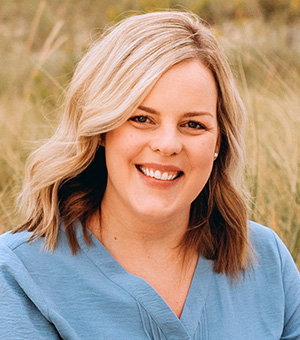
Lauren Keefe
Assistant Director
EdTech & User Services
she/her/hers

Amanda Martin
Assistant Director of Autism Services
Dub-C Autism Program
she/her/hers
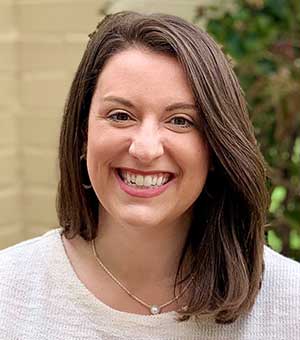
Lexie McCarthy, Ed.D.
Director
Off-Campus and Commuter Services
she/her/hers
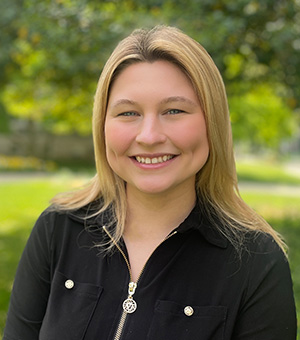
Madison Steinbrenner
Instructional Designer
Teaching and Learning Center
she/her/hers
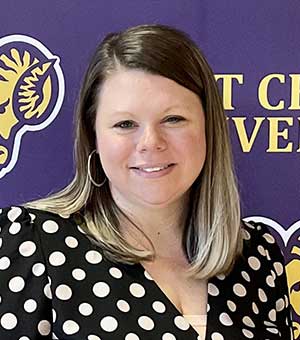
Amanda Thomas
Executive Director for Assessment and Planning
Office of the Vice President for Student Affairs
Chair of the Ram Plan Review Committee
she/her/hers

Amanda Woodworth
Community Manager, Southeast Pennsylvania
Pennsylvania State Employees Credit Union
she/her/hers
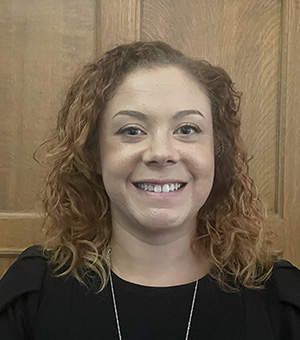
Kayla Walden
Assistant Director of Campus Recreation for Outdoor Adventure Pursuits and Operations
Campus Recreation
she/her/hers

Lauren Zahour
Assistant Director of Operations
Health and Wellness
she/her/hers
